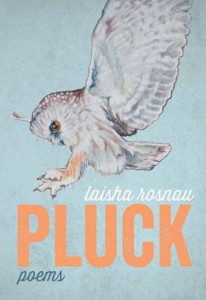Tofino and Clayoquot Sound: A History
Margaret Horsfield and Ian Kennedy
Harbour Publishing
640 pages; $36.95
Reviewed by Margaret Thompson
The cover image of this handsome book captures the kind of seascape the names Tofino and Clayoquot Sound immediately evoke: the huge pale sky, a broad stretch of golden sand punctuated by tide pools, waves curling in past offshore islands, a rocky promontory covered in trees, shafts of sunlight lancing through the green and making ghosts of the upper branches. The title, though, tells us that this is not another travelogue designed to celebrate the extraordinary beauty and wildness of the western edge of Vancouver Island; it is a history of a fabled place.
As a history, it has a great deal in common with biography, especially the kind which studies celebrated people who are still living. In just the same way as a biographer explores every detail of the subject’s background, antecedents, formative influences, and life choices in order to explain his or her fame, so Margaret Horsfield and Ian Kennedy have approached this relatively small area of Canadian geography to explain how it has arrived at its present state. As a result, the place becomes a character with a starring role in its ongoing dramatic narrative, far more complex and entertaining than its reputation as a modern tourist mecca would suggest.
The authors begin at the very beginning, with the first volcanic upheavals of 400 million years ago, and the vast collisions of land masses and buckling tectonic plates, the advance and retreat of ice, and the erosion of wind and water that led to the present geography. The detailed description of these giant forces at work emphasizes the grandeur and endurance of the place; the Nuu-chah-nulth peoples who first settled there, drawn by its rich resources, blended harmoniously with their surroundings, if not always with each other, for thousands of years, undisturbed. By contrast, later pioneers had no hereditary feel for the land; they were there to impose their own ways, for their own ends.
Inevitably, biographers will concentrate on the people important to their subjects. No surprise that the early settlers provide the authors with a wonderful cast of supporting characters, whose personalities and actions supply a fund of good stories. There is the missionary who insisted on carrying his pet canary in a cage as he was transported in a canoe; the eccentric Frederick Tibbs and his fondness for dynamite; the former cowboy, Edward Fitzpatrick, who was marooned on a rocky islet and sheltered in the roots of a tree for 19 days; and Bill Spittal and his dog, Joe Beef.
The authors blend these anecdotes seamlessly into a coherent and exhaustive analysis of the forces and events that affected the development of the area. They trace the ebb and flow of enterprises like the sea otter trade, fishing and logging, and the impact of social changes like the missions and residential schools, the building of roads, and the delivery of goods and mail by sea. They describe the change that came to the area with the Second World War, when Tofino suddenly became the first line of defence against a distant enemy across the Pacific, never seeing any action to speak of, but establishing the beginnings of an airport. More modern times have seen just as much change; the hippies of the ’60s and the War in the Woods in the ’80s added their share of strife, at the same time changing the attitude to the environment for ever.
Horsfield and Kennedy acknowledge that there will always be changes and surprises lying ahead, but they stress that the people of the area, after years of division, appear to be relating to each other in new ways. The place survives, ready to adapt to whatever happens next. As the authors conclude, “Here on the west coast, another wave is always about to break.”
Margaret Thompson’s new novel is The Cuckoo’s Child.

